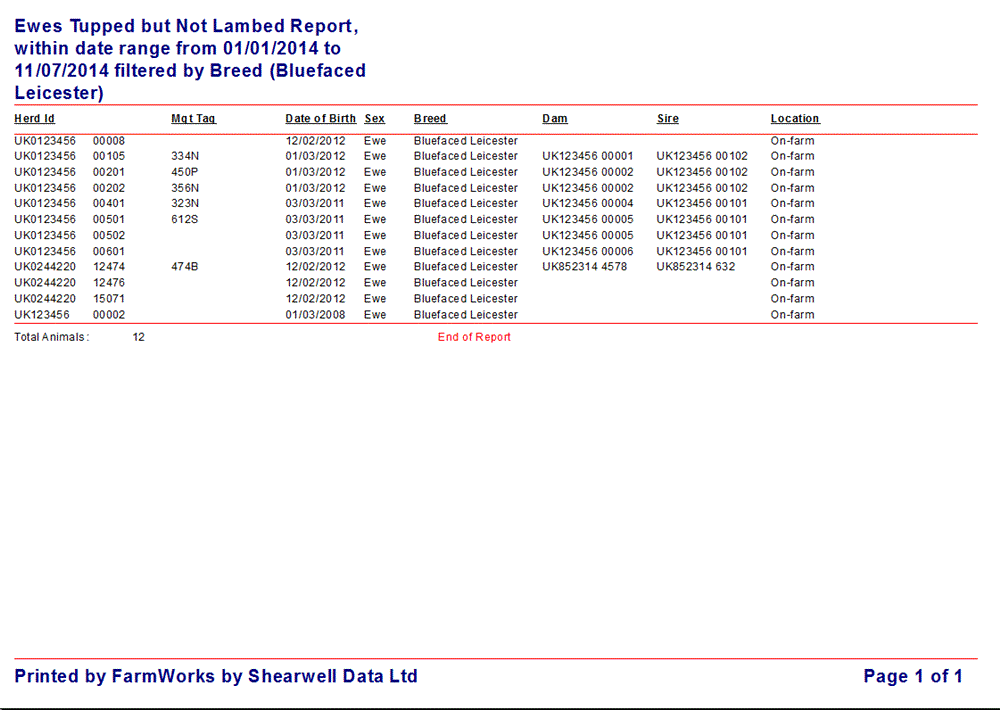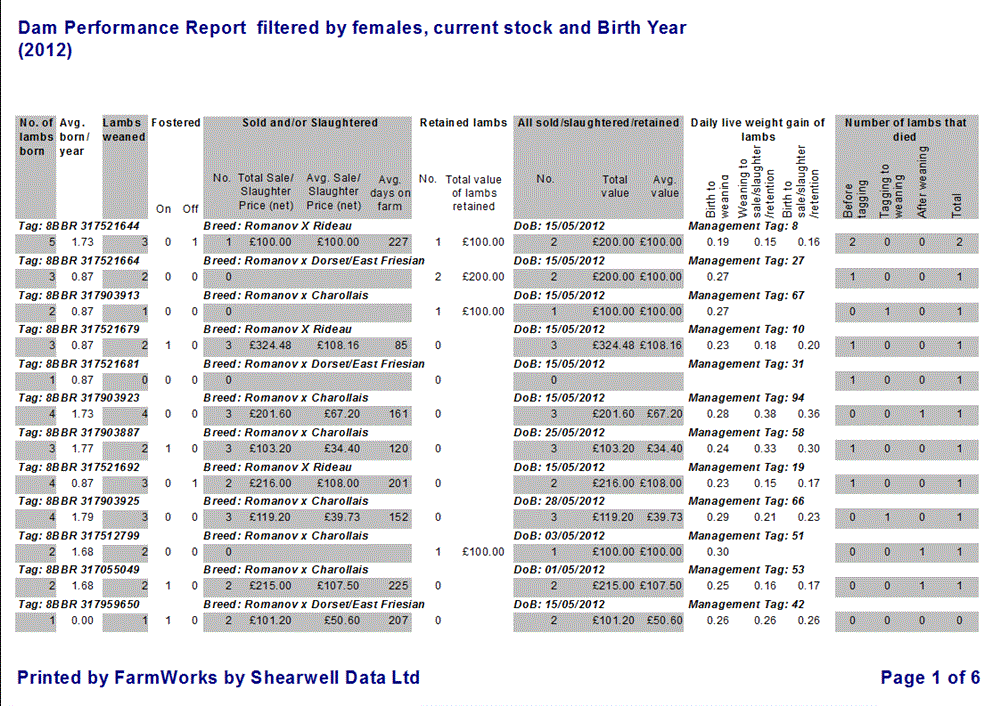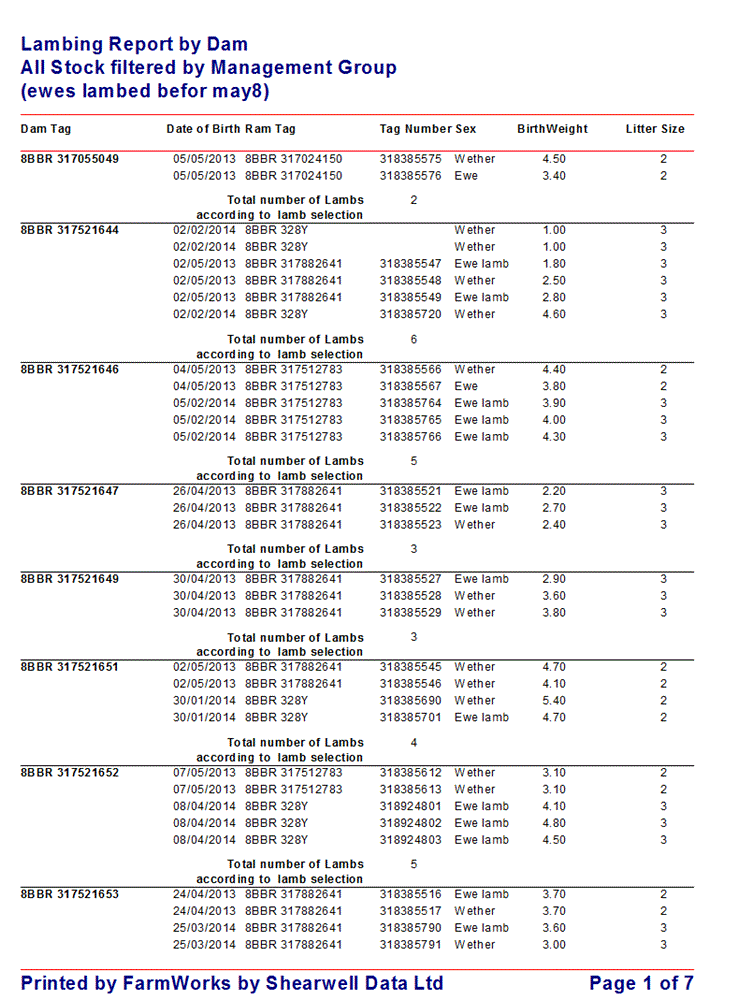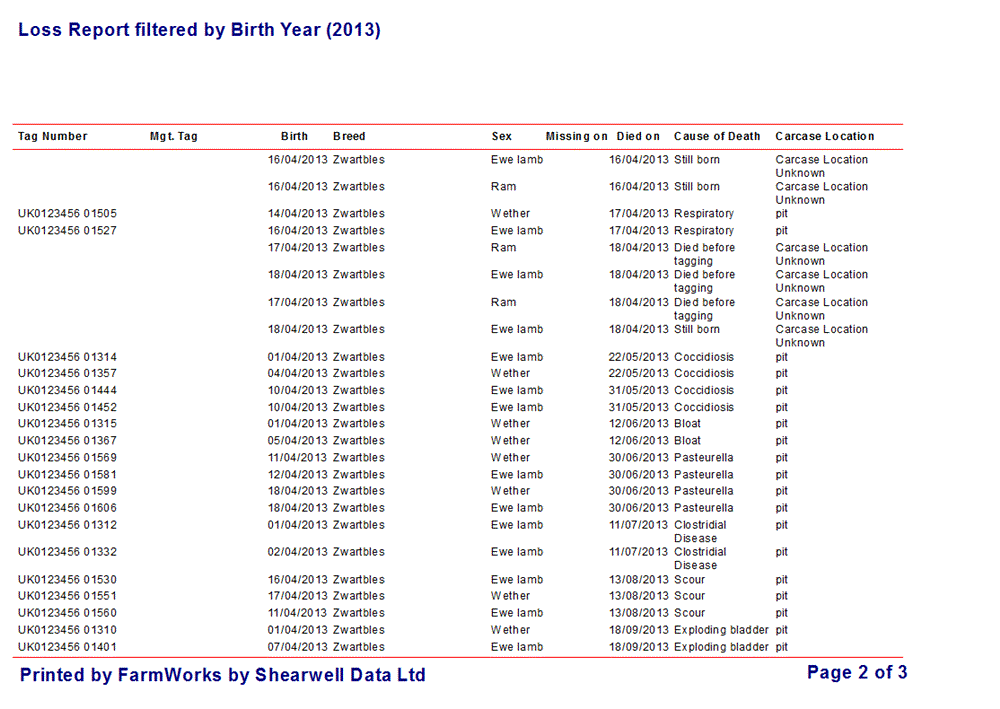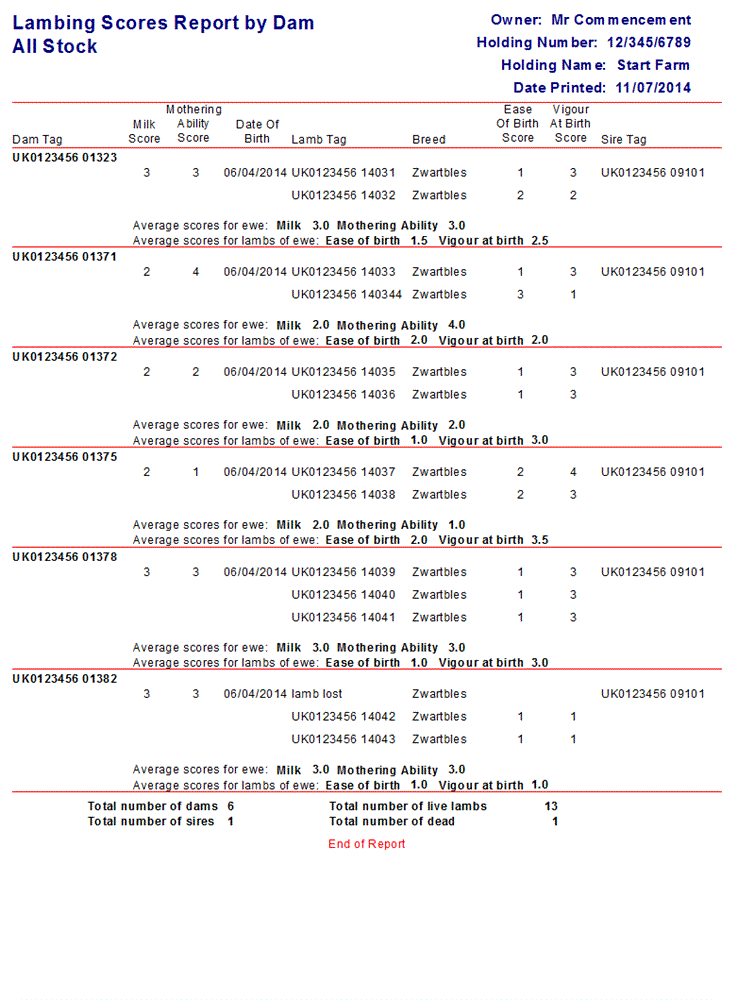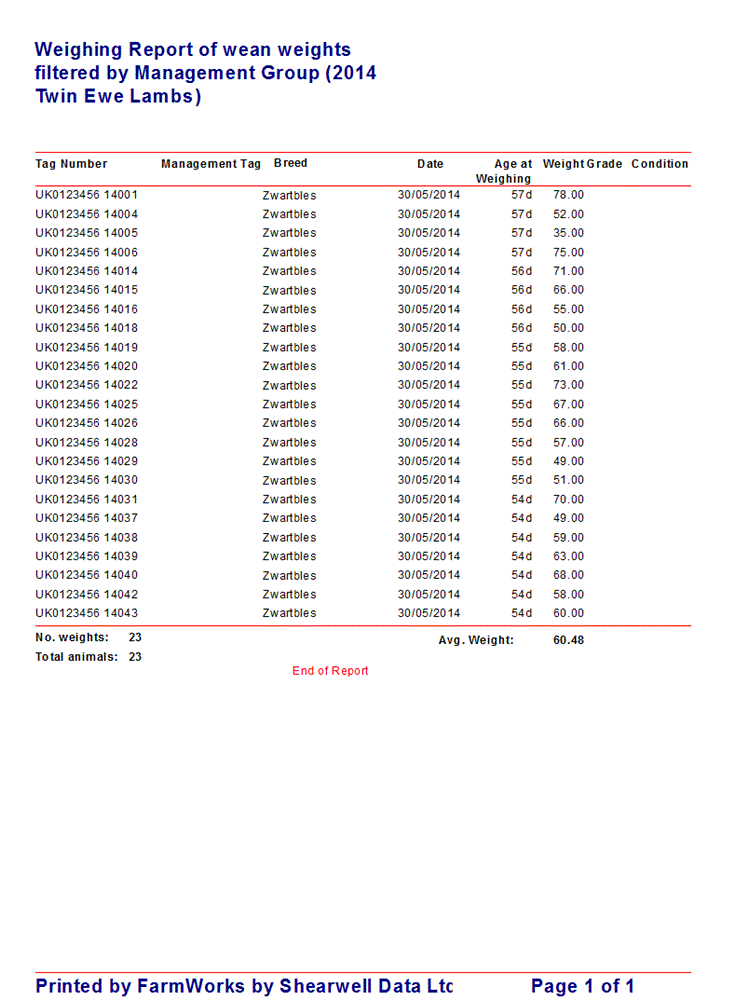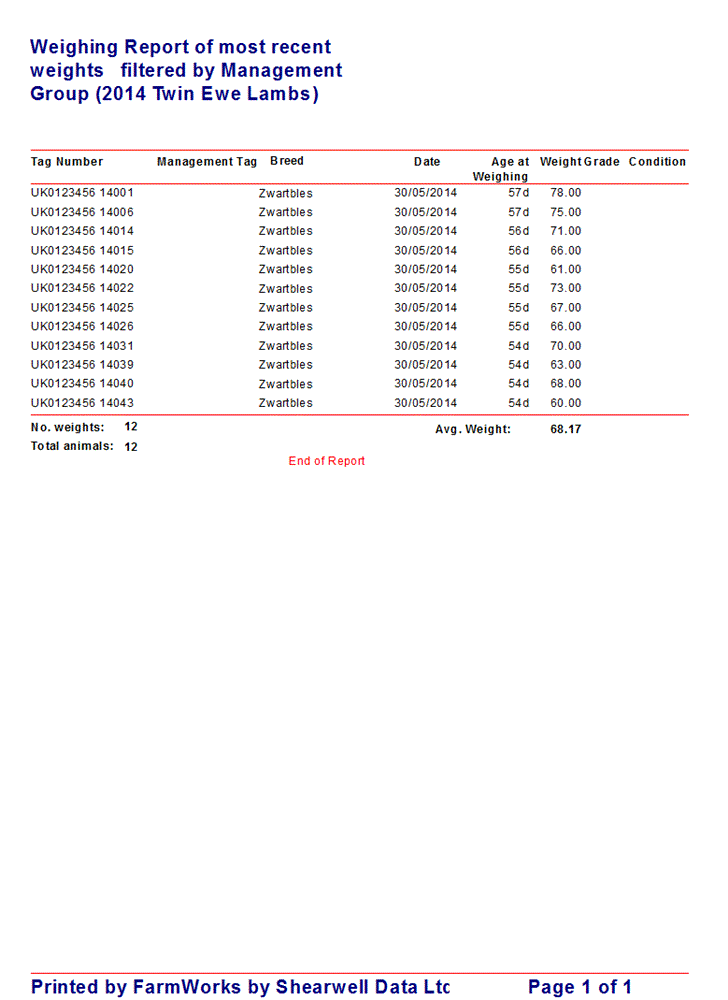A flock is made up of individual animals with a wide range of physical traits, from body size to growth rates, from fertility to sex drive, from milk production to mothering.
How well your animals perform is the expression of their genes. No amount of good feed and management can overcome poor genetics. The genetic merits of a breeding animal aren’t visible to the eye but they can be calculated through careful record keeping.
The more information you collect on each breeding animal, the more accurately you can make predictions about their offspring. Some qualities can be measured directly, like weight gain or number of lambs born. Some important traits, like milking ability, can only be evaluated indirectly by measuring lamb weaning weights or lamb survival.
Performance records are an objective way to compare animals within your flock so you can find those superior dams and sires. Genetic improvement happens when you only keep replacements from your top-performers.
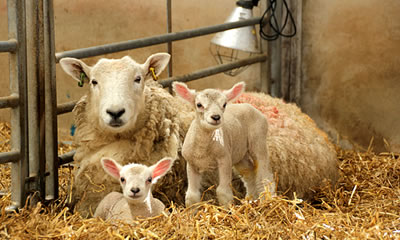
Find your best ewes
Your ewes have a job to do – wean healthy lambs in exchange for grass and good care from you. Some of your ewes work harder than others. FarmWorks Classic can help you find and keep the daughters of those hard-working ewes, and show the ewes to cull who aren’t earning their keep.
The following are examples of using FarmWorks Classic to help improve ewe productivity. Conditions on your own farm will differ so use your best judgement to make management decisions about genetic improvement in your own flock.
Successful breeding
A ewe's first duty is to get pregnant! (Click here to learn how to record tupping on the Stock Recorder.) A ewe in good body condition put to a fertile ram should have a lamb every year. You might have ewes on your farm that have never lambed, or ewes that take a long holiday between lambings. How much money would you save if you culled those ewes?
- In FarmWorks Classic, run a Sheep Not Lambed report after lambing season is over to identify the ewes that didn’t lamb or lost all their lambs.
- Make a management group of those ewes for culling.
- Put a comment on all of them to mark them as culls.
- When you are ready to market, run your sheep through the race and use the Stock Recorder drafting function to easily sort out the ewes marked as culls.
- Sort the Sheep Not Lambed report to show the tups. You might find that a particular ram wasn’t very fertile. Mark inferior rams for culling too.
- Sort the Sheep Not Lambed report to show the age of the ewes. If many of your young ewes didn’t get pregnant you might need to change your management or feeding program.
Litter Size
Number of lambs born per ewe affects your farm profits. (Click here to learn how to record births on the Stock Recorder.) Ewes with twins are more profitable than ewes with just a single lamb, even if the twins grow more slowly. Litter size is a fertility trait that you can select for if you retain only twin or triplet-born ewe lambs.
- In FarmWorks Classic, run a Dam Productivity report. Compare ewes for average number of lambs born per lambing.
- Make a management group of ewes that consistently have single lambs.
- Put a comment on all of them to mark them as culls.
- When you are ready to market, run your sheep through the race and use the Stock Recorder drafting function to easily sort out the ewes marked as culls.
Single-born lambs are often bigger and better-looking than twin lambs. You risk choosing singles rather than twins for replacements if you are selecting strictly on size or weight and not keeping records of birth type.
- In FarmWorks Classic, run a Lambing report filtered to show only the ewes that had twins or triplets.
- Make a management group of their female lambs as potential replacements.
- After weaning, run all the lambs through the race and use the Stock Recorder drafting function to easily sort out the twin-born ewe lambs.
Lamb survival
Dead lambs leak away your profits – ewes eat all year whether or not they wean a lamb. To get a true picture of your death loss it’s important to record all the lambs born, even the lambs that die at birth, and any lambs that die before weaning. (Click here to learn how to record a dead lamb on the Stock Recorder.)
- In FarmWorks Classic, run a Loss report for dead lambs.
- Filter by cause of death to look for trends or disease.
- If the death loss in your newborn lambs is due to management (no shelter, thin ewes, disease, etc.) then the sooner you see the problem the sooner you can repair it.
- If you are losing newborn lambs because of mis-mothering then those ewes should be identified and culled.
- In FarmWorks Classic, run a Dam Productivity report. Compare ewes for lamb deaths before tagging, between birth and weaning, and after weaning.
- Make a management group of ewes that lose an unacceptable number of lambs before weaning.
- Put a comment on all of them to mark them as culls.
- When you are ready to market, run your sheep through the race and use the Stock Recorder drafting function to easily sort out the ewes marked as culls.
Unassisted lambing
Difficulty lambing can have a number of causes, both genetic and management. Score your ewes and lambs on the Stock Recorder at birth to help eliminate those labour-intensive sheep. (Click here to learn how to use Lambing Trait Scores on the Stock Recorder.)
- In FarmWorks Classic, make a management group of ewe lambs you are considering as replacements.
- Run a Lambing Scores report on those ewe lambs.
- The ewe lambs that needed assistance to be born, were weak at birth or needed help to suck could be eliminated as potential replacements.
- Show the sires on a Lambing Scores report for lambing difficulty, to identify any rams whose lambs are prone to birthing problems.
Weaning weights
Most of a lamb’s weight gain from birth to 10 weeks of age is a reflection of the dam’s milk supply. After that the lamb’s own genetics for growth will determine its weight gain, based on the feed you provide. Sheep lactation peaks at around 4 weeks after lambing and then declines steadily until the lamb stops sucking naturally after about 12 weeks postpartum.
Weigh your lambs before the natural weaning point. (Click here to learn how to record weights on the Stock Recorder) Compare your ewes on the number and weight of their lambs to find your most productive individuals.
- In FarmWorks Classic, run a Weaning Weight report to find the average weaning weight of all the ewe lambs.
- In FarmWorks Classic, run a Weight report filtered to only show the twin-born ewe lambs that had above-average weaning weights.
- Make a management group of those above-average, twin-born ewe lambs for possible retention as breeding stock.
- When you are ready to choose replacement ewe lambs, run your lambs through the race and use the Stock Recorder drafting function to easily sort out lambs to sell and lambs to keep.
